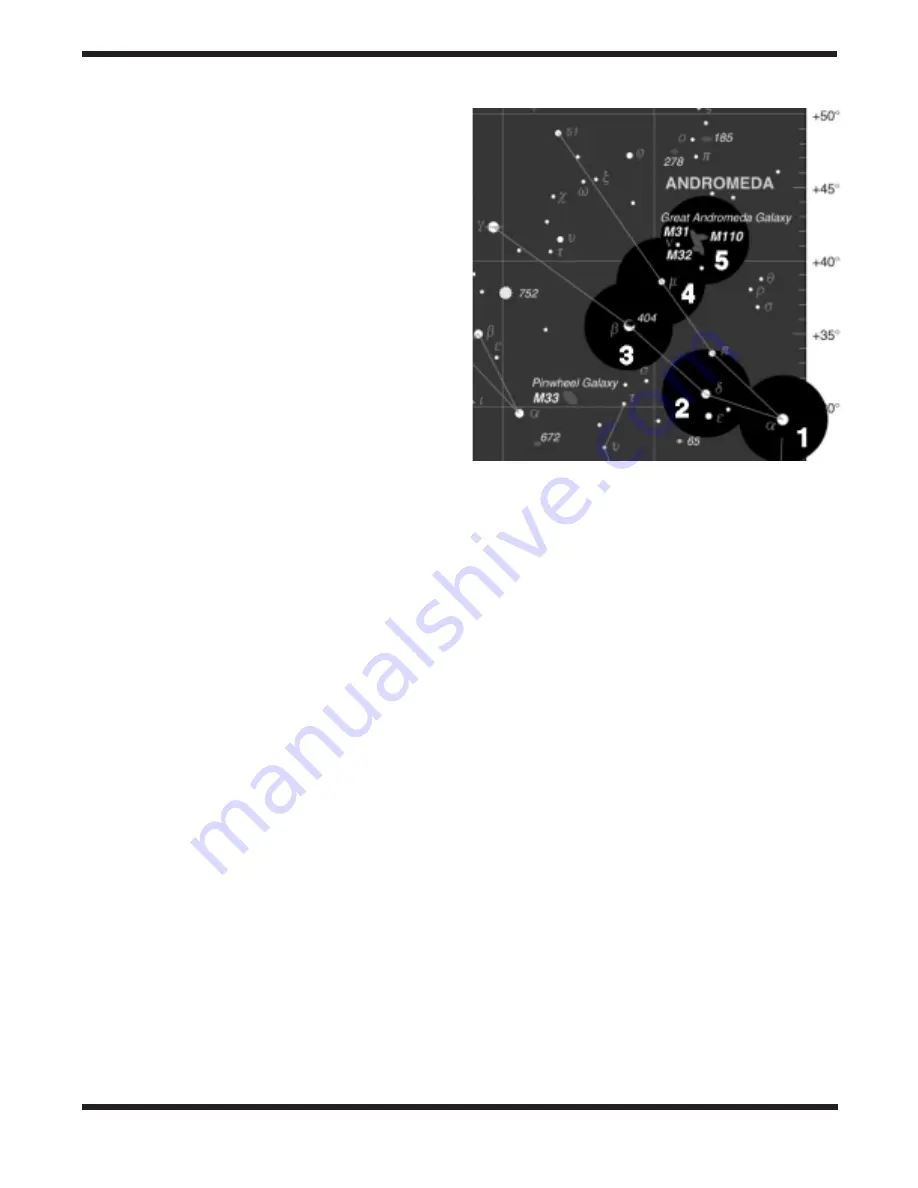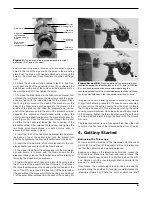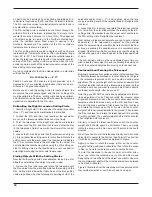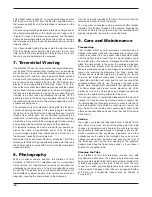
13
watch the ever-changing positions of its four largest moons—
Io, Callisto, Europa, and Ganymede. Higher-power eyepieces
should bring out the cloud bands on the planet’s disk.
SATURN The ringed planet is a breathtaking sight when it is
well positioned. The tilt angle of the rings varies over a period
of many years; sometimes they are seen edge-on, while at
other times they are broadside and look like giant “ears” on
each side of Saturn’s disk. A steady atmosphere (good see-
ing) is necessary for a good view. You will probably see a
bright “star” close by, which is Saturn’s brightest moon, Titan.
VENUS At its brightest, Venus is the most luminous object in
the sky, excluding the Sun and the Moon. It is so bright that
sometimes it is visible to the naked eye during full daylight!
Ironically, Venus appears as a thin crescent, not a full disk,
when at its peak brightness. Because it is so close to the Sun,
it never wanders too far from the morning or evening horizon.
No surface markings can be seen on Venus, which is always
shrouded in dense clouds.
MARS The Red Planet makes its closest approach to Earth
every two years. During close approaches you’ll see a red
disk, and may be able to see the polar ice cap. To see surface
detail on Mars, you will need a high-power eyepiece and very
steady air!
D. The Stars
Stars will appear like twinkling points of light. Even powerful
telescopes cannot magnify stars to appear as more than a
point of light. You can, however, enjoy the different colors of
the stars and locate many pretty double and multiple stars.
The famous “Double-Double” in the constellation Lyra and the
gorgeous two-color double star Albireo in Cygnus are
favorites. Defocusing a star slightly can help bring out its
color.
E. Deep-Sky Objects
Under dark skies, you can observe a wealth of fascinating
deep-sky objects, including gaseous nebulas, open and glob-
ular star clusters, and a variety of different types of galaxies.
Most deep-sky objects are very faint, so it is important that
you find an observing site well away from light pollution. Take
plenty of time to let your eyes adjust to the darkness. Do not
expect these subjects to appear like the photographs you see
in books and magazines; most will look like dim gray
smudges. Our eyes are not sensitive enough to see color in
deep-sky objects except in a few of the brightest ones. But as
you become more experienced and your observing skills get
sharper, you will be able to ferret out more and more subtle
details and structure.
How to Find Deep-Sky Objects: Star Hopping
Star hopping, as it is called by astronomers, is perhaps the
simplest way to hunt down deep-sky objects to view in the
night sky. It entails first pointing the telescope at a bright star
close to the object you wish to observe, and then progressing
to other stars closer and closer to the object until it is in the
field of view of the eyepiece. It is a very intuitive technique that
has been employed for hundreds of years by professional and
amateur astronomers alike. Keep in mind, as with any new
task, that star hopping may seem challenging at first, but will
become easier over time and with practice.
To star hop, only a minimal amount of additional equipment is
necessary. A star chart or atlas that shows stars to at least
magnitude 5 is required. Select one that shows the positions
of many deep-sky objects, so you will have a lot of options to
choose from. If you do not know the positions of the constella-
tions in the night sky, you will need a planisphere to identify
them.
Start by choosing bright objects to view. The brightness of an
object is measured by its visual magnitude; the brighter an
object, the lower its magnitude. Choose an object with a visu-
al magnitude of 9 or lower. Many beginners start with the
Messier objects, which represent some of the best and bright-
est deep-sky objects, first catalogued about 200 years ago by
the French astronomer Charles Messier.
Determine in which constellation the object lies. Now, find the
constellation in the sky. If you do not recognize the constella-
tions on sight, consult a planisphere. The planisphere gives
an all-sky view and shows which constellations are visible on
a given night at a given time.
Now, look at your star chart and find the brightest star in the
constellation that is near the object you are trying to find.
Using the finder scope, point the telescope at this star and
center it on the crosshairs. Next, look again at the star chart
and find another suitably bright star near the bright star cur-
rently centered in the finder. Keep in mind that the field of view
Figure 10.
Star hopping is a good way to locate hard-to-find
objects. Refer to a star chart to map a route to the object that uses
bright stars as guideposts. Center the first star you’ve chosen in the
finder scope and telescope eyepiece (1). Now move the scope
carefully in the direction of the next bright star (2), until it is
centered. Repeat (3 and 4). The last hop (5) should place the
desired object in the eyepiece.




















